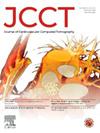Association of coronary inflammation with plaque vulnerability and fractional flow reserve in coronary artery disease
IF 5.5
2区 医学
Q1 CARDIAC & CARDIOVASCULAR SYSTEMS
引用次数: 0
Abstract
Background
The fat attenuation index (FAI) measured using coronary computed tomography angiography (CCTA) enables the direct evaluation of pericoronary adipose tissue composition and vascular inflammation. We aimed to investigate the association of fractional flow reserve (FFR) and plaque vulnerability with coronary inflammation.
Methods
Patients with suspected coronary artery disease (CAD) who underwent CCTA and invasive FFR measurements within 90-day were included. A cloud-based medical device, CaRi-Heart, serves as a surrogate tool for evaluating coronary inflammation based on FAI by analyzing CCTA images. The correlations between CCTA-defined plaque characteristics, invasive coronary angiographic and physiologic assessments, and CaRi-Heart risk were analyzed. The primary endpoint was the patient-oriented composite outcome (POCO) consisting of all-cause death, any myocardial infarction, and any revascularization.
Results
A total of 564 patients (median age 67.0 years; 75.4 % men) were included. There were no significant differences in quantitative and qualitative plaque characteristics or FFR between the high- and low-CaRi-Heart risk groups (i.e., ≥5 % and <5 %). During the median follow-up of 3.2 years [1.13–4.73 years], CaRi-Heart risk ≥5 % was associated with a significantly higher rate of POCO compared to CaRi-Heart risk <5 % (0.9 % vs. 10.1 %, P = 0.037). The CaRi-Heart risk was an independent predictor of POCO as a continuous (adjusted HR 1.016, 95 % CI 1.005–0.027, P = 0.004) and categorical variable (CaRi-Heart risk ≥5 %, adjusted HR 2.949, 95 % CI 1.182–7.360, P = 0.021), regardless of high-risk plaque characteristics and FFR.
Conclusion
Coronary inflammation risk assessed using CaRi-Heart risk provides independent prognostic information regardless of plaque vulnerability and physiologic stenosis in patients with CAD.

冠状动脉炎症与斑块易损性和冠状动脉血流储备的关系
背景:使用冠状动脉计算机断层扫描血管造影术(CCTA)测量脂肪衰减指数(FAI)可直接评估冠状动脉周围脂肪组织的组成和血管炎症。我们的目的是研究分数血流储备(FFR)和斑块易损性与冠状动脉炎症的关系:纳入90天内接受CCTA和有创FFR测量的疑似冠状动脉疾病(CAD)患者。基于云的医疗设备CaRi-Heart可作为一种替代工具,通过分析CCTA图像来评估基于FAI的冠状动脉炎症。研究分析了CCTA定义的斑块特征、有创冠状动脉造影和生理评估以及CaRi-Heart风险之间的相关性。主要终点是以患者为导向的综合结果(POCO),包括全因死亡、任何心肌梗死和任何血运重建:共纳入 564 名患者(中位年龄 67.0 岁;75.4% 为男性)。高CaRi-Heart风险组和低CaRi-Heart风险组(即≥5%和≥5%)在斑块的定量和定性特征或FFR方面没有明显差异:使用 CaRi-Heart 风险评估冠状动脉炎症风险可提供独立的预后信息,与 CAD 患者斑块的脆弱性和生理狭窄无关。
本文章由计算机程序翻译,如有差异,请以英文原文为准。
求助全文
约1分钟内获得全文
求助全文
来源期刊

Journal of Cardiovascular Computed Tomography
CARDIAC & CARDIOVASCULAR SYSTEMS-RADIOLOGY, NUCLEAR MEDICINE & MEDICAL IMAGING
CiteScore
7.50
自引率
14.80%
发文量
212
审稿时长
40 days
期刊介绍:
The Journal of Cardiovascular Computed Tomography is a unique peer-review journal that integrates the entire international cardiovascular CT community including cardiologist and radiologists, from basic to clinical academic researchers, to private practitioners, engineers, allied professionals, industry, and trainees, all of whom are vital and interdependent members of our cardiovascular imaging community across the world. The goal of the journal is to advance the field of cardiovascular CT as the leading cardiovascular CT journal, attracting seminal work in the field with rapid and timely dissemination in electronic and print media.
 求助内容:
求助内容: 应助结果提醒方式:
应助结果提醒方式:


